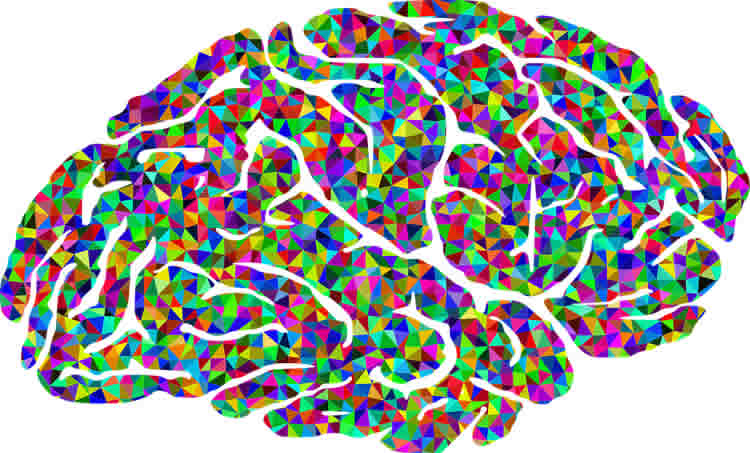Summary: EEG tests reveal children on the autism spectrum have lower peak alpha frequency than their peers not on the spectrum. Additionally, the lower the peak alpha frequency, the lower a child’s non-verbal IQ was, the researchers discovered. Researchers believe the peak alpha frequency may not only be a useful biomarker for autism diagnosis, but also a marker to test the severity of the disorder.
Source: UCLA.
Potential biomarker correlates brain wave frequency with nonverbal IQ.
UCLA researchers have discovered that children with autism have a tell-tale difference on brain tests compared with other children. Specifically, the researchers found that the lower a child’s peak alpha frequency — a number reflecting the frequency of certain brain waves — the lower their non-verbal IQ was. This is the first study to highlight peak alpha frequency as a promising biomarker to not only differentiate children with autism from typically developing children, but also to detect the variability in cognitive function among children with autism.
BACKGROUND
Autism spectrum disorder affects an estimated one in 68 children in the United States, causing a wide range of symptoms. While some individuals with the disorder have average or above-average reasoning, memory, attention and language skills, others have intellectual disabilities. Researchers have worked to understand the root of these cognitive differences in the brain and why autism spectrum disorder symptoms are so diverse.
An electroencephalogram, or EEG, is a test that detects electrical activity in a person’s brain using small electrodes that are placed on the scalp. It measures different aspects of brain activity including peak alpha frequency, which can be detected using a single electrode in as little as 40 seconds and has previously been linked to cognition in healthy individuals.
METHOD
The researchers performed EEGs on 97 children ages 2 to 11; 59 had diagnoses of autism spectrum disorder and 38 did not have the disorder. The EEGs were taken while the children were awake and relaxed in dark, quiet rooms. Correlations among age, verbal IQ, non-verbal IQ and peak alpha frequency were then studied.
IMPACT
The discovery that peak alpha frequency relates directly to non-verbal IQ in children with the disorder suggests a link between the brain’s functioning and the severity of the condition. Moreover, it means that researchers may be able to use the test as a biomarker in the future, to help study whether an autism treatment is effective in restoring peak alpha frequency to normal levels, for instance.

More work is needed to understand whether peak alpha frequency can be used to predict the development of autism spectrum disorder in young children before symptoms emerge.
The authors of the study are Shafali Spurling Jeste, UCLA associate professor in psychiatry, neurology and pediatrics and a lead investigator of the UCLA Center for Autism Research and Treatment; Abigail Dickinson and Charlotte DiStefano, postdoctoral fellows at the UCLA Center for Autism Research and Treatment; and Damla Senturk, associate professor of biostatistics at UCLA.
Funding: The study was funded by Autism Speaks (Meixner Postdoctoral Fellowship in Translational Research), the National Institutes of Mental Health (K23MH094517), the National Institute of General Medical Sciences (R01 GM111378-01A1) and the National Institute of Health (ACE 2P50HD055784-06).
Source: Leigh Hopper – UCLA
Image Source: NeuroscienceNews.com image is in the public domain.
Original Research: Abstract for “Peak alpha frequency is a neural marker of cognitive function across the autism spectrum” by Abigail Dickinson, Charlotte DiStefano, Damla Senturk, andShafali Spurling Jeste in European Journal of Neuroscience. Published online July 12 2017 doi:10.1111/ejn.13645
[cbtabs][cbtab title=”MLA”]UCLA “Autism Severity Detected With Brain Activity Test.” NeuroscienceNews. NeuroscienceNews, 25 July 2017.
<https://neurosciencenews.com/brain-activity-test-autism-7172/>.[/cbtab][cbtab title=”APA”]UCLA (2017, July 25). Autism Severity Detected With Brain Activity Test. NeuroscienceNew. Retrieved July 25, 2017 from https://neurosciencenews.com/brain-activity-test-autism-7172/[/cbtab][cbtab title=”Chicago”]UCLA “Autism Severity Detected With Brain Activity Test.” https://neurosciencenews.com/brain-activity-test-autism-7172/ (accessed July 25, 2017).[/cbtab][/cbtabs]
Abstract
Peak alpha frequency is a neural marker of cognitive function across the autism spectrum
Cognitive function varies substantially and serves as a key predictor of outcome and response to intervention in autism spectrum disorder (ASD), yet we know little about the neurobiological mechanisms that underlie cognitive function in children with ASD. The dynamics of neuronal oscillations in the alpha range (6-12 Hz) are associated with cognition in typical development. Peak alpha frequency is also highly sensitive to developmental changes in neural networks which underlie cognitive function, and therefore it holds promise as a developmentally-sensitive neural marker of cognitive function in ASD. Here, we measured peak alpha band frequency under a task-free condition in a heterogeneous sample of children with ASD (N=59) and age-matched typically developing (TD) children (N=38). At a group level, peak alpha frequency was decreased in ASD compared to TD children. Moreover, within the ASD group, peak alpha frequency correlated strongly with non-verbal cognition. As peak alpha frequency reflects the integrity of neural networks, our results suggest that deviations in network development may underlie cognitive function in individuals with ASD. By shedding light on the neurobiological correlates of cognitive function in ASD, our findings lay the groundwork for considering peak alpha frequency as a useful biomarker of cognitive function within this population which, in turn, will facilitate investigations of early markers of cognitive impairment and predictors of outcome in high risk infants.
“Peak alpha frequency is a neural marker of cognitive function across the autism spectrum” by Abigail Dickinson, Charlotte DiStefano, Damla Senturk, andShafali Spurling Jeste in European Journal of Neuroscience. Published online July 12 2017 doi:10.1111/ejn.13645






